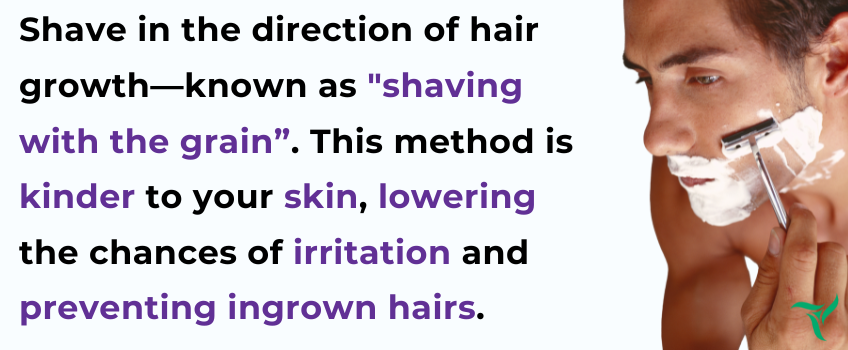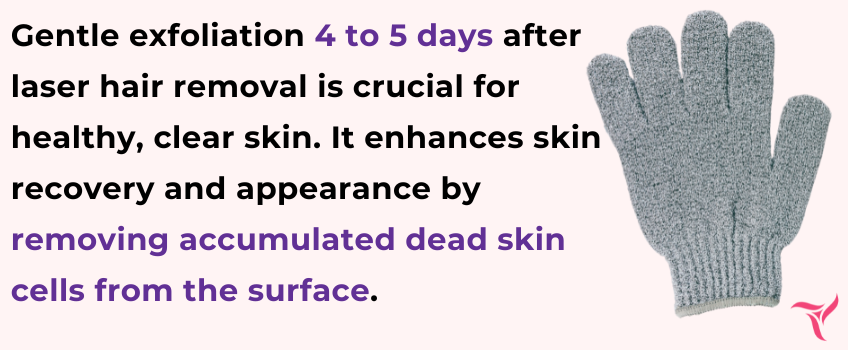
Your Gateway to Silky Smooth Skin: Navigating Your Journey Through Laser Hair Removal and Optimal Shaving Practices
A widespread myth surrounding laser hair removal suggests that one session alone can render you permanently free from the need to shave. However, the reality is more complex and involves a journey towards that final, hair-free destination.
Achieving lasting silky smooth skin through laser hair removal will require several sessions, primarily due to the nature of hair growth cycles. Hair growth occurs in distinct stages, and laser treatments are most effective when targeting hair in its active growth phase.
Consequently, this entails the need for periodic shaving as you progress through your series of laser hair removal sessions, until the hair follicle is completed destroyed.
Understanding the nuances of managing hair growth between treatments can significantly enhance the effectiveness of the process. Here are detailed insights and strategies for optimizing your shaving routine during the course of laser hair removal treatments:
- Recognize the Growth Cycles: Familiarize yourself with the hair growth cycles – anagen (active growth), catagen (transition), and telogen (resting) – as laser treatments are most efficacious during the anagen phase. This knowledge will help you understand the timing and necessity of your treatments.
- Timing Your Shaves: It’s essential to shave close to your laser treatment appointment, ideally 24 to 48 hours before. Shaving prepares the skin by ensuring that the laser can effectively target the hair follicle without interference from surface hair, which enhances the treatment’s efficacy.
- Patience Between Sessions: After a laser session, wait for your skin to heal before you shave again. This can vary from person to person but typically means holding off on shaving for at least a few days post-treatment. Pay attention to how your skin reacts and use its condition as a guide.
- Stick to shaving only! No Waxing or Plucking: In the intervals between your laser treatments, opt for shaving over other hair removal methods like waxing or plucking. Shaving doesn’t remove hair from the root but simply trims it close to the skin’s surface, ensuring that the follicles are intact and can be targeted in your next laser session.
- Adjust Frequency as Needed: As you progress through your treatment plan, you may notice a decrease in hair density and growth speed. This reduction allows for longer intervals between shaving. Adjust your shaving frequency accordingly, and always shave before your next laser appointment to maintain optimal conditions for hair removal.
Mastering Shaving Post-Laser Hair Removal: Tips for Minimizing Skin Irritation
Patience is key, as the treated hair will shed naturally over time. During the period immediately following your laser hair removal session, you might feel the urge to shave, but it’s crucial to wait until your skin has completely recovered from the treatment to prevent irritation.
This healing process could extend up to two weeks (but for most it will take around 3-5 days). Following this waiting period, you’re free to shave, adhering to these guidelines to ensure a gentle shave:
#1 Try to postpone shaving for at least 72 hours following your laser treatment:
It’s crucial to steer clear of shaving over regions that are tender, swollen, or displaying signs of blisters following your laser hair removal treatment. These symptoms indicate that your skin is still healing, and shaving these areas could exacerbate irritation or even lead to infection.
When you do shave, make sure to use a fresh razor or ensure that your blade is thoroughly cleaned and sharp. This practice helps in minimizing skin irritation, as dull blades can pull at the hair and damage the skin, making it more susceptible to irritation.
Furthermore, when shaving, it’s important to follow the direction of hair growth, or “shave with the grain.” This technique is gentler on your skin and helps reduce the risk of irritation and the development of ingrown hairs, which occur when shaved hair grows back into the skin instead of up and out. Ingrown hairs not only cause discomfort but can also lead to unsightly bumps.
Additionally, the choice of shaving aids plays a significant role in maintaining the health of your skin. Opt for products that are free from alcohol and fragrances, as these ingredients can dry out and irritate sensitive skin, especially after it has been treated with laser. Selecting shaving creams, gels, or foams designed for sensitive skin can provide a protective barrier between the razor and your skin, allowing for a smoother shave and minimizing the risk of cuts and irritation.
#2 Timing is Everything
During the recovery phase, your skin is in a delicate state, recuperating from the intense exposure to laser treatment. Shaving too soon can aggravate the skin, leading to increased sensitivity, irritation, and even abrasions.
Such adverse effects not only detract from the overall smooth, hair-free result you aim for but can also lead to more serious complications.
The disturbed skin barrier is more susceptible to infections, and the irritation could escalate into scarring or hyperpigmentation—conditions that are significantly harder to treat and may leave lasting marks.
To sidestep these potential pitfalls, it’s critical to observe your skin’s healing process and adjust your shaving routine accordingly. Signs that your skin has sufficiently healed include the absence of redness, swelling, and any sensation of discomfort.
Only when these indicators suggest that your skin has returned to its baseline state should you consider resuming shaving.
Wait for the skin to fully recover before shaving, which may take up to two weeks, to avert further irritation that could compromise your skin’s integrity, potentially resulting in scarring or hyperpigmentation.
#3 Gentle Exfoliation is Key
A few days following your laser hair removal treatment, you may notice your hair shedding. This is completely normal and is a sign the treatment worked.
The hairs that fall out are the ones that were damaged by the laser and will no longer come back. Before you shave, consider exfoliating the skin to get all of the damaged hair out. This step isn’t necessarily a requirement, but it will make your shave more effective by doing so.
The integration of gentle exfoliation into your skincare routine after a laser hair removal treatment is a critical step toward ensuring the health and clarity of your skin. Initiating this process approximately 4 to 5 days following your treatment can significantly enhance your skin’s recovery and appearance. The primary objective of this gentle exfoliation is to facilitate the removal of dead skin cells that accumulate on the skin’s surface.
These cells, if left unaddressed, can obstruct hair follicles, setting the stage for ingrown hairs. Ingrown hairs not only detract from the smooth aesthetic achieved by laser hair removal but can also lead to discomfort and irritation.
To navigate this aspect of your post-treatment care effectively, it’s advisable to select a method of exfoliation that is both effective and gentle on your skin. Opting for a mild exfoliant or a soft exfoliating glove can help you achieve this balance.
These tools are designed to carefully lift away dead skin cells without inflicting stress or abrasion on your skin, which is particularly important when it’s in a vulnerable state of recovery.
#4 Monitor Your Shaving Routine
Keeping a log of your shaving frequency and any subsequent skin reactions will help identify any patterns or specific practices that may be contributing to skin discomfort or inflammation.
By embracing these practices, you ensure not just the efficacy of your laser hair removal treatment but also maintain the health and beauty of your skin in the long term.
Conclusion
Embark on your journey to silky-smooth skin with LMC – Laser Medical Clinic, where cutting-edge technology meets personalized care. Discover the difference with our #1 dermatologist-recommended GentleMaxPro Plus, the pinnacle of laser hair removal technology designed for your comfort and effectiveness.
We’re excited to offer you a complimentary consultation to tailor a treatment plan just for you. Don’t let unwanted hair hold you back any longer. Call or text us today at 647.560.8333 to book your free consult. Your path to flawless skin starts with LMC – Laser Medical Clinic.
To book your complimentary consultation appointment, call us at 416-548-6548 Book a Consultation


